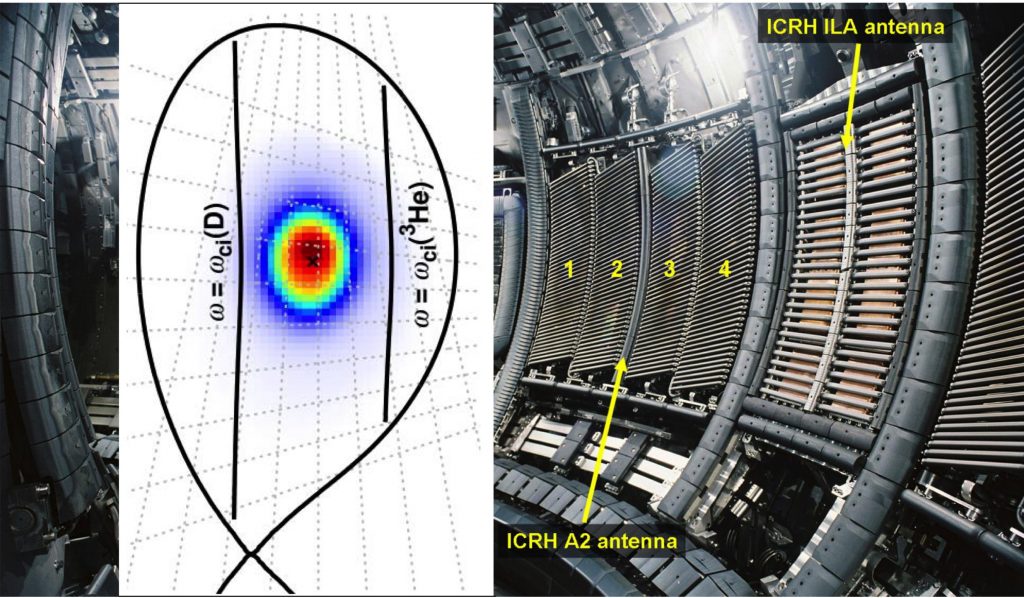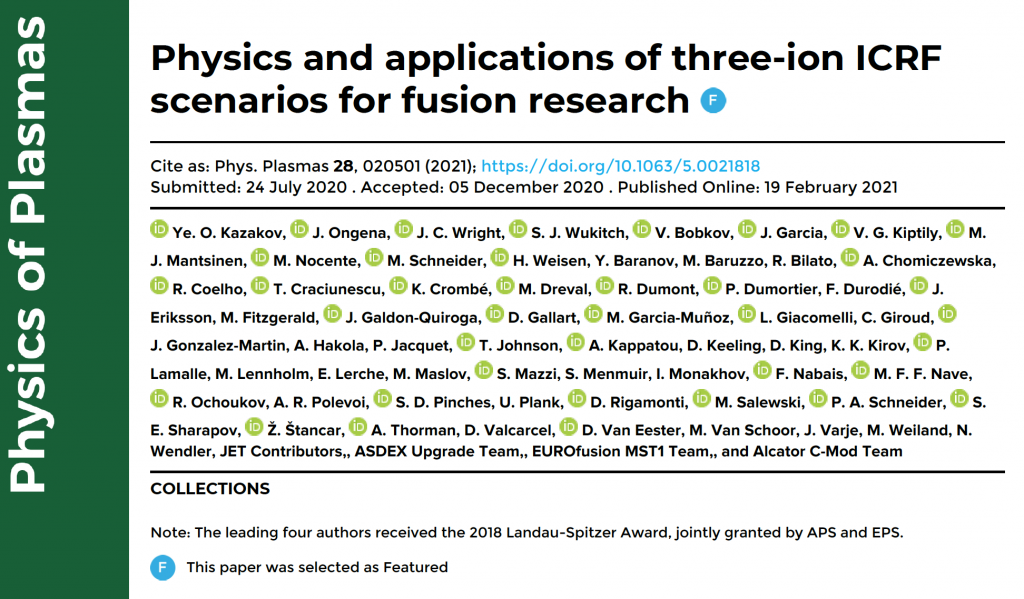Extremely high plasma temperatures are required to allow energy production in a fusion reactor. The Laboratory for Plasma Physics of the Royal Military Academy (LPP-ERM/KMS), led by director Prof. Michael Van Schoor, is famous for its expertise in heating fusion devices with ion cyclotron resonance heating (ICRH). One of the recent achievements in this field was the identification and experimental demonstration of the novel three-ion ICRH scenarios, led by a group of LPP-ERM/KMS and MIT-PSFC (Boston, US) researchers in collaboration with colleagues from a large number of laboratories worldwide.
In the past few years, these novel scenarios have become a flexible tool with a broad range of different applications in fusion research. The high efficiency of the new technique has been demonstrated in multiple series of experiments on the tokamaks Alcator C-Mod (USA), ASDEX Upgrade (Germany) and JET (UK). Furthermore, the potential of three-ion ICRH scenarios for future operations of ITER has been recognized in the ITER Research Plan. The progress reached by this multi-international team is summarized in a recent review paper in the American journal “Physics of Plasmas”, with LPP-ERM/KMS researchers – Yevgen Kazakov and Jef Ongena – as leading authors. The success of the team has been recognized by the Editors of the journal, who promoted this publication to a “Featured Article”. This paper is currently one of the most-read articles of the journal, already reaching over 1200 downloads since its publication.

